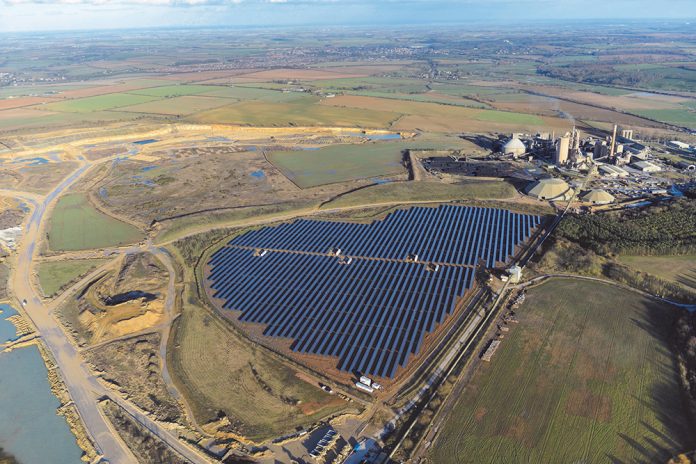The UK’s national grid is overworked and undersized as it struggles to keep up with the demands of an electricity hungry nation. Simon Nicholls looks at how decentralising energy generation will provide clean, reliable power right where it’s needed.
When electricity supply workers went on strike in December 1970, they thought the effect of their action would take weeks, maybe months to be felt.
It took less than a day. Within eight hours, in the ensuing winter darkness shops were being looted and the army had been called in to provide back-up power for hospitals, some of which were operating by candlelight.
In a very British response to the crisis, ice cream vans fitted with generators were used to supply emergency power to hospitals in Kent. In Parliament an MP commented: “Any further deterioration will without doubt produce a situation not far short of a national state of emergency.”
Today our need for stable, clean, cheaper power is far greater than it was in 1970 and the pressures on the centralised networks that generate and supply it are enormous; too great, some think, to be sustainable.
Economies and societies depend on electricity, and while breakdowns in supply are rare, the national supply is under stress. Last winter National Grid, worried that demand would outstrip supply, put three mothballed coal-fired power stations on standby. As we saw in 1970, the impact of restricted supply is immediate and deep.
The way we generate and transport power needs to be rethought to accommodate the way we now use it. Although we think of the national grid, the network of power stations, transmission lines and pylons that move electricity across the UK, as an essentially modern piece of infrastructure, it isn’t.
In fact, it’s getting on for a century old. National Grid recently removed a set of pylons on the banks of River Avon that were built in 1930. The grid, conceived and designed at a time when most houses in the UK were still lit by gas, is struggling with the demands of the 21st century, and it’s going to struggle even more as the way we produce and use electricity changes.
As increasing numbers of businesses use renewables to generate their own power and feed it back to the grid, the centralised nature of the grid and its infrastructure, of which there is not enough, cannot cope with the amount of power that has to be transported.
It also can’t cope with the nature of that power. Renewables are famously intermittent, with generation peaks and troughs dependent on the weather, and this causes problems for a grid designed to handle consistent levels of power from always-on power stations.
The plan for a National Grid began in 1926, when Prime Minister Stanley Baldwin realised the country needed a single, unified source of power that everyone could be connected to. And most of it was built in the 1930s. Decentralised, distributed generation did not figure in its conception and construction – in fact, it was built to centralise power distribution.
Before 1926 electricity was generated and distributed by small private networks. Access was patchy and prices were high. The grid was designed to provide power for the whole country at lower prices.
We are attempting to supply the needs of a 21st century economy and society using a system that was designed for the needs of a country 100 years ago. There are plans to massively extend transmission capacity with new lines, but no number of new pylons will solve all the problems, because this is not just about supply and demand.
The grid needs to be fundamentally different, allowing a shift from centralised electricity generation to distributed generation. It needs to be more than a passive infrastructure: it needs to be smart.
Essentially this a grid that allows communications and power to flow in both directions. We have the technology: automation, artificial intelligence, sensors, the internet of things all exist and can be combined to construct a smart grid.
A smart grid would make the most of distributed electricity generation and allow it to flourish. Distributed generation is huge and growing – every solar panel, every wind turbine and every battery storage system are part of the revolution. The potential for distributed generation to change the way we use power for the better is huge.
Because it’s not only about improving how we consume power. It’s about changing the nature of energy use from the traditional, linear relationship between generator, supplier and user to a more complex, symbiotic relationship.
Imagine a building that generates, stores, consumes and regulates its own power use, effectively becoming a mini-grid. It has solar on the roof and wind turbines in a neighbouring field. It has a car park with solar panel canopies, feeding every parking space with power to turn it into an EV charging station. Batteries store power for use when production is intermittent, or to sell back to the grid. And in the future emerging technologies such as hydrogen production and storage can be added.
The user becomes the generator and the supplier. The supplier becomes a user. The user gains autonomy over use, production and costs. Factories become microgrids, with as much renewable generation as can be physically accommodated, connected to digital systems that monitor and control generation and demand. Manufacturing businesses can exercise fine control over their power use, cutting costs and emissions. And the grid gets a break from supplying ever increasing amounts of power.
None of this is the stuff of the future. All of these technologies exist today – indeed Olympus Power, my business, installs them all the time. To us, every commercial roof top is a potential electricity generator. Every car park could have solar canopies. Every factory could become a microgrid. We help businesses end their dependency on ever-rising energy costs, cut their emissions and take control of their energy use.
These ideas are commercial and scalable. Different buildings have different requirements: warehouses need to charge fleets of commercial vehicles, while retail outlets could use EV charging to attract visitors. Businesses can use their control over energy to rethink the ways in which it works for them: to generate revenue, to attract visitors, to cut emissions.
For us, as designers and installers of renewable technology, what we do has defined our business mission: to help our customers save 1 million tonnes of CO2 by 2025. Without distributed generation this would be impossible.
Distributed generation and decentralising power aren’t the only answers to the country’s (and the world’s) energy needs. But they’re solutions we can use right now. We have the technology and ability to put solar on most roof tops, to turn business parks into microgrids and to build a smart network of localised power generation. Who knows – one day, we may even be able to finally stop using the last of the coal fired power stations.
Simon Nicholls is founder and CEO of Olympus Power, the renewable energy experts, specialising in commercial solar installations of all kinds.
olympuspower.co.uk



